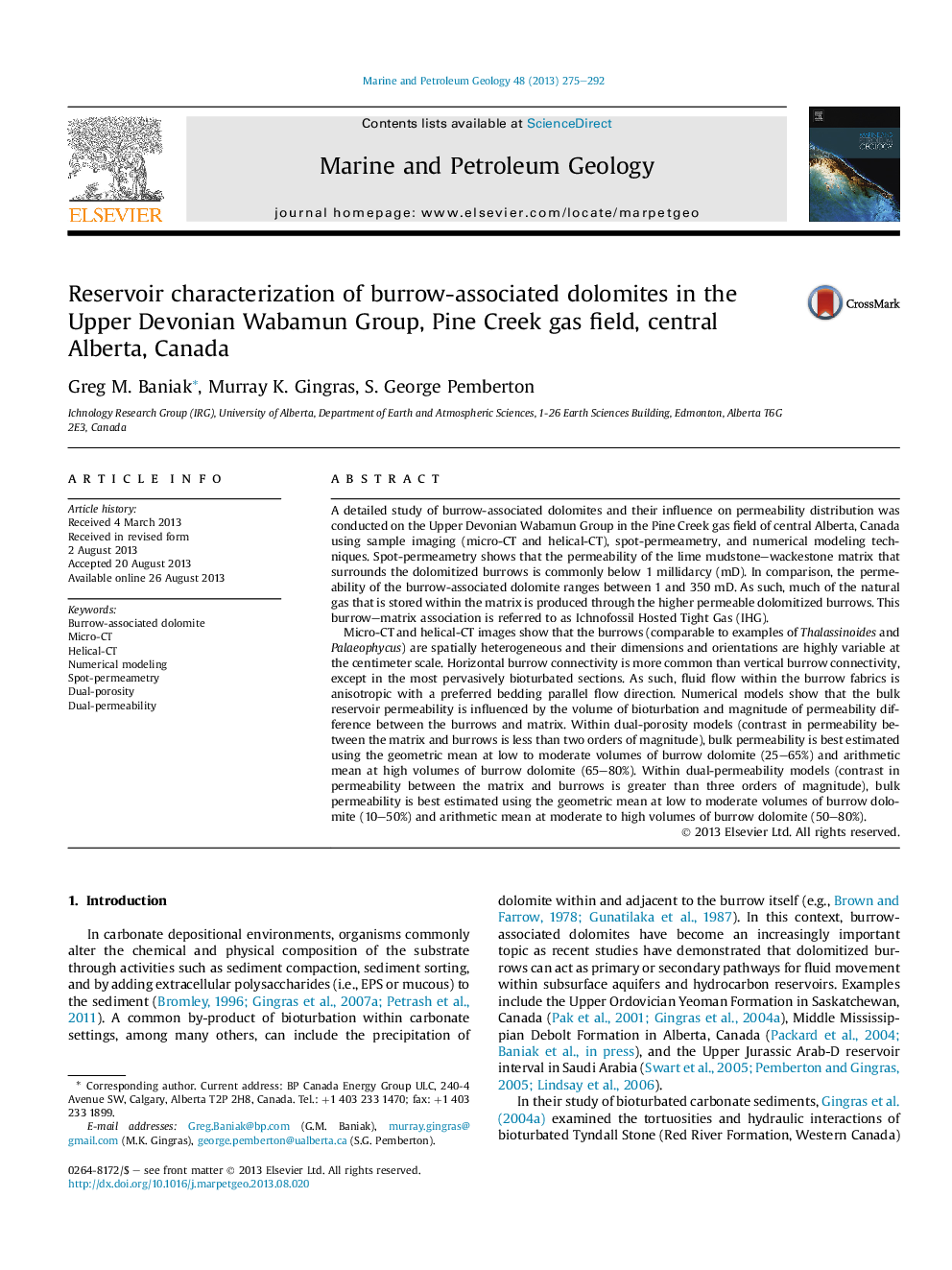| Article ID | Journal | Published Year | Pages | File Type |
|---|---|---|---|---|
| 4695833 | Marine and Petroleum Geology | 2013 | 18 Pages |
•Micro-CT and helical-CT imaging techniques used to evaluate bioturbated samples.•Analytical and numerical fluid flow models to approximate reservoir permeability.•Introduce Ichnofossil Hosted Tight Gas (IHG) for bioturbated tight gas reservoirs.•Examples of IHG reservoirs (e.g. production history) from the Pine Creek field.•A new conceptual framework for assessing fluid flow within IHG reservoirs.
A detailed study of burrow-associated dolomites and their influence on permeability distribution was conducted on the Upper Devonian Wabamun Group in the Pine Creek gas field of central Alberta, Canada using sample imaging (micro-CT and helical-CT), spot-permeametry, and numerical modeling techniques. Spot-permeametry shows that the permeability of the lime mudstone–wackestone matrix that surrounds the dolomitized burrows is commonly below 1 millidarcy (mD). In comparison, the permeability of the burrow-associated dolomite ranges between 1 and 350 mD. As such, much of the natural gas that is stored within the matrix is produced through the higher permeable dolomitized burrows. This burrow–matrix association is referred to as Ichnofossil Hosted Tight Gas (IHG).Micro-CT and helical-CT images show that the burrows (comparable to examples of Thalassinoides and Palaeophycus) are spatially heterogeneous and their dimensions and orientations are highly variable at the centimeter scale. Horizontal burrow connectivity is more common than vertical burrow connectivity, except in the most pervasively bioturbated sections. As such, fluid flow within the burrow fabrics is anisotropic with a preferred bedding parallel flow direction. Numerical models show that the bulk reservoir permeability is influenced by the volume of bioturbation and magnitude of permeability difference between the burrows and matrix. Within dual-porosity models (contrast in permeability between the matrix and burrows is less than two orders of magnitude), bulk permeability is best estimated using the geometric mean at low to moderate volumes of burrow dolomite (25–65%) and arithmetic mean at high volumes of burrow dolomite (65–80%). Within dual-permeability models (contrast in permeability between the matrix and burrows is greater than three orders of magnitude), bulk permeability is best estimated using the geometric mean at low to moderate volumes of burrow dolomite (10–50%) and arithmetic mean at moderate to high volumes of burrow dolomite (50–80%).
